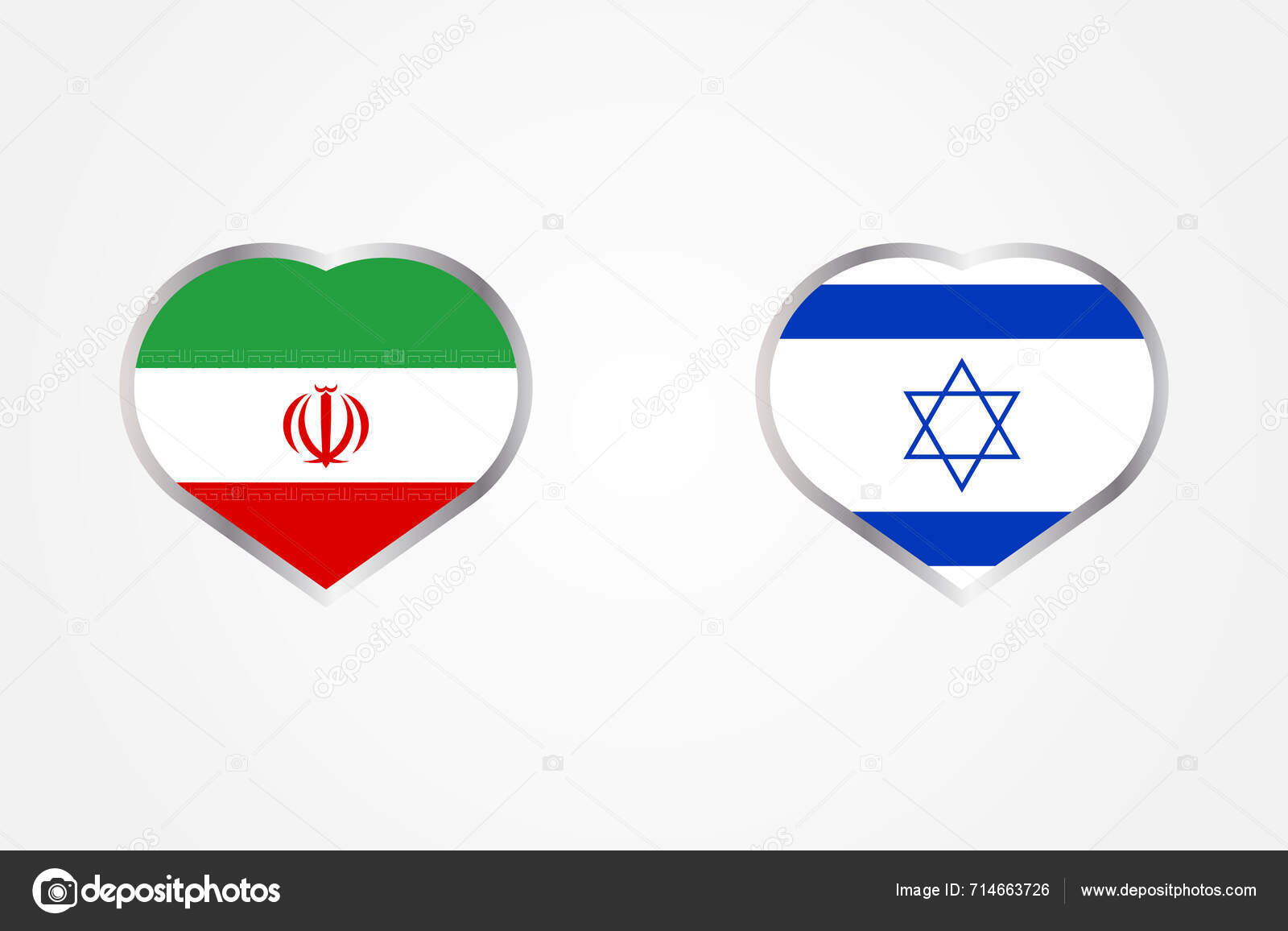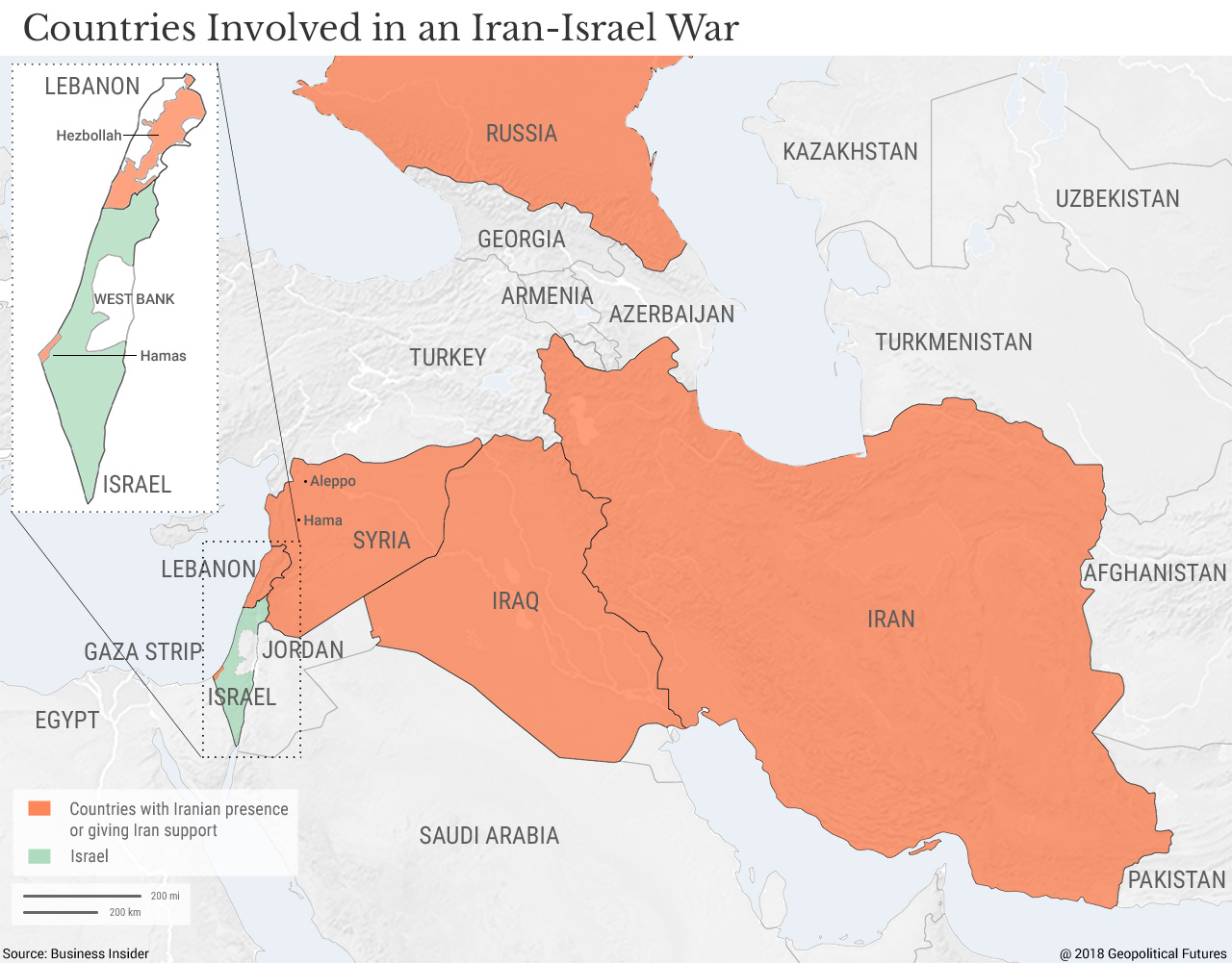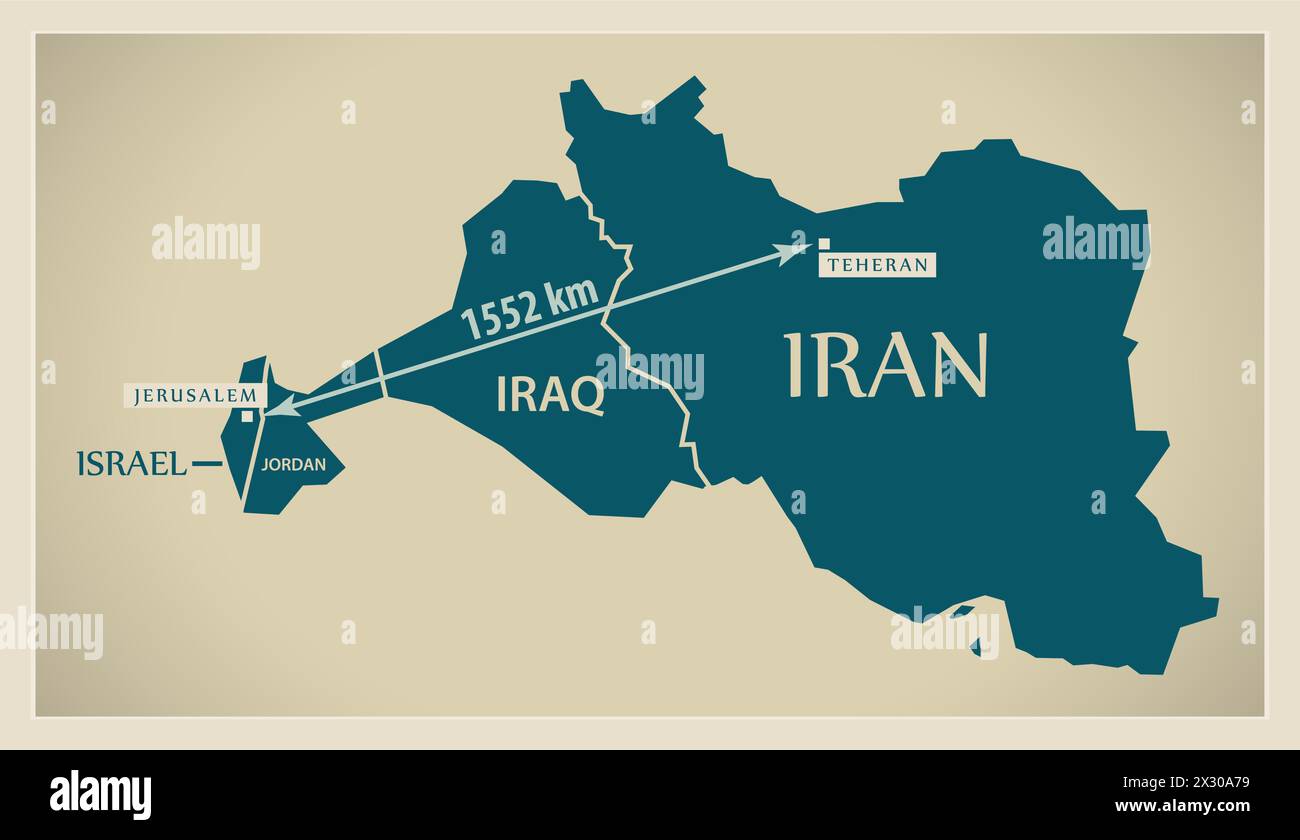Unpacking The Distance: Iran, Israel, And The Kilometers Between Them
The geographical relationship between Iran and Israel is often a subject of intense global scrutiny, particularly when discussing regional dynamics and security. While headlines frequently focus on political tensions, understanding the raw "distance Iran Israel kilometers" is fundamental to grasping the practicalities and implications of their proximity. This article delves into the precise measurements, travel times, and the broader context of the physical separation between these two significant Middle Eastern nations.
Beyond the geopolitical narratives, the actual kilometers separating Iran and Israel offer a tangible perspective on various aspects, from logistics to strategic considerations. By exploring the diverse ways this distance is measured—be it by air, road, or between specific cities—we can gain a more nuanced appreciation of their spatial relationship. This exploration will provide clear data points, helping to demystify a topic often clouded by abstract discussions.
Table of Contents
- Understanding the Geographical Divide: Iran and Israel's Proximity
- Key Distance Measurements: A Closer Look
- Travel Time and Methods: Beyond Straight Lines
- Road Distances: A Complex Journey
- Implications of Proximity: Geopolitical Context
- Factors Influencing Perceived Distance
- The Role of Technology in Bridging Distances
- Navigating the Geopolitical Landscape: Distance in Diplomacy
Understanding the Geographical Divide: Iran and Israel's Proximity
Geographically, Iran and Israel are situated within the broader Middle East, but their exact positions dictate the "distance Iran Israel kilometers" that separates them. Israel occupies the southwestern part of the region, bordering the Mediterranean Sea, while Iran is located further east, extending towards Central Asia and bordering the Persian Gulf. This positioning means they are not direct neighbors, but rather separated by other countries such as Jordan, Iraq, and Syria, which form a crucial land bridge between them. Understanding this geographical layout is the first step in appreciating the various measurements of distance.
- Project Escape Room Roblox School
- Kevin Bacon Spouse
- Unveiling The Secrets Behind Crazyjamjam Leaks
- Norissa Valdez
- Miu Shiromine
The concept of "distance" itself can be interpreted in multiple ways. Is it the shortest possible line through the air, ignoring borders and terrain? Or is it the practical distance one would travel by road, considering geographical barriers and political realities? For the purposes of this discussion on "distance Iran Israel kilometers," we will explore both theoretical and practical measurements, providing a comprehensive overview that goes beyond a single number. This multifaceted approach is essential for anyone seeking to truly understand the spatial relationship between these two nations.
The "As the Crow Flies" Perspective
When we talk about the "shortest distance" or "straight line distance," we are referring to the "as the crow flies" measurement. This is the direct line from one point to another, unimpeded by geographical features, political borders, or travel routes. For Iran and Israel, this direct air travel distance is a key figure often cited. According to various calculations, the air travel (bird fly) shortest distance between Israel and Iran is approximately 1,789 kilometers or 1,112 miles. Another figure places the total straight line distance between Iran and Israel at 1,558 km (kilometers) and 593.2 meters, or 968.5 miles. This variation often depends on the specific geographic points chosen within each country for the measurement.
It's important to note that this "as the crow flies" measurement, while precise, rarely reflects the actual travel distance. It serves as a baseline, a theoretical minimum. For instance, the distance between Israel and Iran is approximately 1,046 kilometers (650 miles) based on a straight line, also known as the "as the crow flies" distance. This measurement is purely theoretical for practical travel, but it is highly significant in military and strategic planning, particularly concerning missile ranges and aerial operations. The direct distance between Tehran, the capital of Iran, and Jerusalem, the capital of Israel, is approximately 1,100 miles (1,770 kilometers), reinforcing the general range of these straight-line measurements. These figures provide a foundational understanding of the "distance Iran Israel kilometers" in its most direct form.
- Pining For Kim By Tailblazer
- Masahub New
- Jackerman Mothers Warmth
- Emily Carriveau Divorce Filing
- Exploring The Fascinating World Of Yololary Spiderman
Key Distance Measurements: A Closer Look
To fully appreciate the "distance Iran Israel kilometers," it's crucial to look at various specific measurements, as a single number can be misleading. Different calculations arise depending on the exact starting and ending points within each country. For instance, the distance from a central point in Israel to a central point in Iran will differ from the distance between their respective capitals or major cities. This section will break down these specific measurements, offering a clearer picture of the spatial relationship.
The provided data highlights several key figures, each offering a unique perspective on the "distance Iran Israel kilometers." These include general country-to-country measurements and more specific city-to-city distances, which are often more relevant for practical travel or strategic considerations. Understanding these nuances is vital for anyone seeking accurate information about the geographical separation between these two nations.
Capital-to-Capital Distances: Tehran to Jerusalem/Tel Aviv
Focusing on the capitals provides a more specific and often more relevant measure of the "distance Iran Israel kilometers." The distance between Tehran, Iran's capital, and Jerusalem, Israel's capital, is approximately 1,559 kilometers (968 miles). This figure offers a direct comparison between the political and administrative centers of both nations. However, it's also important to consider Tel Aviv, Israel's economic and cultural hub, which is often a key reference point.
The total straight line flight distance from Tehran, Iran to Tel Aviv, Israel is 988 miles, which translates to approximately 1,590 kilometers. Conversely, the total straight line flight distance from Tel Aviv, Israel to Tehran, Iran is also 988 miles or 1,590 kilometers, indicating consistency regardless of the direction of measurement. These capital-to-capital distances are particularly important for understanding the range of direct flights (if they were to exist) or the reach of long-range capabilities. The shortest distance (air line) between Israel and Tehran is 1,000.91 miles (1,610.81 km), further solidifying the range of these direct aerial paths.
Travel Time and Methods: Beyond Straight Lines
While straight-line distances provide a theoretical minimum for the "distance Iran Israel kilometers," actual travel time and methods introduce complexities. The mode of transport significantly impacts how long it takes to traverse this distance, and political realities mean direct travel routes are often unavailable. Therefore, understanding travel time requires considering various hypothetical scenarios and typical speeds associated with different modes of transport.
The data provided offers insights into how long it might take to cover the "distance Iran Israel kilometers" under ideal or theoretical conditions. This includes calculations for air travel, which is the fastest, and mentions of road travel, which is considerably longer and more complex due to geographical and geopolitical factors. These considerations move beyond simple mileage to practical implications.
Air Travel: Speed and Efficiency
Air travel offers the most efficient way to cover the "distance Iran Israel kilometers." If one were to travel with an airplane at an average speed of 560 miles per hour (approximately 900 km/h), the flight time from Israel to Iran would be approximately 1.99 hours, or just under two hours. This calculation is based on the shortest air travel distance of 1,789 km or 1,112 miles. It takes approximately 6 hours and 47 minutes to get from Iran to Israel, including transfers, and approximately 8 hours and 59 minutes to get from Israel to Iran, including transfers. These figures, while hypothetical for direct commercial flights given current political realities, are crucial for understanding the speed at which air assets, including military aircraft or missiles, could theoretically traverse this distance.
The speed and efficiency of air travel highlight how quickly the "distance Iran Israel kilometers" can be covered. This rapid transit time is a significant factor in strategic assessments, particularly concerning response times and the deployment of airborne assets. Even without direct flights, the theoretical flight duration underscores the relative proximity when considering modern aerial capabilities.
Road Distances: A Complex Journey
Unlike air travel, calculating the "distance Iran Israel kilometers" by road is far more intricate and yields significantly different results. Road travel is subject to geographical barriers like mountains and deserts, as well as the necessity of passing through intermediate countries. More importantly, political realities mean there are no direct, open land borders or established road routes for civilian travel between Iran and Israel.
Despite the lack of direct routes, theoretical road distances can be calculated by mapping out potential paths through neighboring countries. The data indicates that the distance between Iran to Israel is approximately 3,716 km by road. Similarly, Israel to Iran is also 3,716 km by road. This figure is vastly different from the straight-line air distance, almost doubling it. For instance, the total driving distance from Tehran, Iran to Tel Aviv, Israel is 1,508 miles or 2,427 kilometers. This discrepancy highlights the immense impact of geographical detours and the lack of direct passage. The practical impossibility of direct road travel underscores that the "distance Iran Israel kilometers" by land is not merely a matter of mileage but a complex geopolitical challenge, involving multiple borders and often circuitous routes through other nations.
Implications of Proximity: Geopolitical Context
The "distance Iran Israel kilometers," whether measured in the air or by hypothetical road, carries profound geopolitical implications. Despite not sharing a direct border, their relative proximity, especially by air, means that developments in one nation can quickly impact the other. This geographical reality underpins many strategic considerations in the Middle East.
From a military perspective, the air distance dictates the range requirements for various weapon systems, including missiles and long-range drones. The question "How long does it take for Iran’s missiles to reach Israel?" is a direct consequence of this proximity, highlighting the strategic vulnerability and the need for robust defense systems. For Israel, understanding the "distance Iran Israel kilometers" is critical for its national security planning, including air defense strategies and potential retaliatory capabilities. For Iran, it influences the design and deployment of its missile programs, which are often cited as a deterrent against potential threats. The existence of intermediate countries like Iraq and Syria, while physically separating them, also introduces complex dynamics, as these territories can become conduits or battlegrounds for proxy conflicts or strategic maneuvering. Thus, the raw "distance Iran Israel kilometers" is not just a number; it's a fundamental variable in the intricate equation of regional power dynamics and security.
Factors Influencing Perceived Distance
The "distance Iran Israel kilometers" is not solely a matter of numerical measurement; it is also influenced by a host of political, technological, and psychological factors that shape how this distance is perceived. While a map provides a static representation, the dynamic nature of international relations can make the distance feel either vast or alarmingly small, depending on the context.
Politically, the absence of diplomatic relations and direct travel routes effectively makes the "distance Iran Israel kilometers" feel much greater than the physical mileage. For ordinary citizens, traveling between these two countries is practically impossible, requiring circuitous routes through multiple third countries, if at all. This lack of direct connectivity transforms a relatively short air distance into an insurmountable barrier for civilian movement. Technologically, advancements in missile technology and aerial reconnaissance can shrink the perceived distance, making any point within the range of such systems feel closer. Conversely, the absence of shared infrastructure or cultural exchange can widen the perceived gap. Psychologically, the deep-seated political tensions and historical narratives between the two nations often amplify the sense of separation, making the "distance Iran Israel kilometers" seem less about geography and more about an ideological chasm. These layers of perception add complexity to the simple numerical values, demonstrating that distance is often more than just kilometers on a map.
The Role of Technology in Bridging Distances
In the modern era, technology plays a pivotal role in redefining what the "distance Iran Israel kilometers" truly means. While physical distances remain constant, technological advancements, particularly in military and communication spheres, can effectively "shrink" the world, bringing distant adversaries into closer proximity in terms of strategic reach and impact.
For instance, the development of long-range ballistic missiles and cruise missiles significantly reduces the practical implications of physical separation. A missile launched from Iran can cover the "distance Iran Israel kilometers" in a matter of minutes, transforming what might seem like a considerable geographical gap into a very short warning time. Similarly, advanced surveillance and reconnaissance technologies allow for real-time monitoring across vast distances, effectively eliminating the geographical buffer that once provided a sense of security. Cyber warfare, another form of technological engagement, completely bypasses physical distance, allowing attacks to be launched from anywhere in the world. On the civilian side, global communication networks and satellite imagery mean that information and imagery from one country can be instantly available in the other, fostering a sense of interconnectedness despite the lack of direct physical contact. Thus, while the "distance Iran Israel kilometers" remains a fixed geographical measurement, technology continually alters its strategic and practical significance, making the world feel smaller and interactions more immediate.
Navigating the Geopolitical Landscape: Distance in Diplomacy
The "distance Iran Israel kilometers" is not merely a geographical fact but a crucial element in the complex geopolitical landscape of the Middle East. It shapes strategic calculations, diplomatic maneuvers, and the very nature of their long-standing rivalry. Understanding this distance is essential for analysts, policymakers, and anyone seeking to comprehend the regional dynamics.
Diplomatically, the physical separation means that direct engagement is rare, and interactions often occur through proxies, international forums, or via third-party mediation. This indirect relationship is partly a function of the "distance Iran Israel kilometers" and the countries that lie between them, which act as both buffers and potential arenas for indirect conflict. The absence of a shared border, unlike other regional rivalries, means that any direct military confrontation would necessarily involve overflying or traversing other sovereign territories, adding layers of complexity and international implications. This geographical reality influences the types of military capabilities each country prioritizes and the alliances they seek to form. Ultimately, the "distance Iran Israel kilometers" serves as a fundamental backdrop against which the high-stakes drama of Middle Eastern politics unfolds, influencing everything from military doctrine to diplomatic overtures.
The Strategic Significance of "Distance Iran Israel Kilometers"
The strategic significance of the "distance Iran Israel kilometers" cannot be overstated. It is a critical variable in military planning, deterrence strategies, and regional power projection. Both nations meticulously analyze this distance to inform their defense postures and offensive capabilities.
For Israel, understanding the "distance Iran Israel kilometers" is paramount for its multi-layered air defense systems, including the Iron Dome, David's Sling, and Arrow systems, which are designed to intercept incoming projectiles. The time it takes for a missile to traverse this distance directly impacts warning times and interception windows. For Iran, the range of its ballistic missile arsenal is directly tied to this distance, as it seeks to develop capabilities that can reach Israeli territory as a deterrent. The strategic depth provided by the intervening countries, while not a direct buffer for air travel, complicates ground-based operations and conventional invasions, making aerial and missile capabilities even more central to any potential conflict scenario. The approximate distance from Guam to Iran is 7,500 kilometers (4,660 miles), highlighting the vast difference in strategic reach compared to the Iran-Israel proximity. The midpoint between Iran and Israel is approximately 862.24 km, further illustrating the significant gap. Ultimately, the "distance Iran Israel kilometers" is a constant factor in the strategic calculations of both nations, influencing their military doctrines, technological investments, and geopolitical alliances in a region where every kilometer counts.
Conclusion
Understanding the "distance Iran Israel kilometers" is far more than a simple geographical exercise; it's a crucial lens through which to view the complex dynamics of the Middle East. From the shortest "as the crow flies" measurement of approximately 1,789 km (1,112 miles) to the more practical, albeit theoretical, road distance of 3,716 km, these figures underscore the varying levels of proximity and the challenges of direct travel. Capital-to-capital distances, such as the 1,559 km between Tehran and Jerusalem, provide specific reference points for strategic planning and the reach of modern technologies.
While the physical kilometers remain constant, the geopolitical landscape, technological advancements, and the absence of diplomatic ties significantly alter the perceived and practical implications of this distance. It influences military strategies, shapes regional alliances, and underscores the need for continued vigilance and dialogue, even if indirect. We hope this detailed exploration has provided you with a clearer, more nuanced understanding of the geographical realities between Iran and Israel. What are your thoughts on how distance impacts international relations? Share your perspectives in the comments below, and explore other related articles on our site to deepen your understanding of global geography and geopolitics.
- Jd Vance Meme
- Amy Corenswet
- Pashto
- Daisys Destruction An Indepth Look At The Controversial Case
- Billie Eilish

Iran Israel War Israel Iran Hearts Concept Flags Iran Israel Stock

Israel and Iran Prepare for Conflict - Geopolitical Futures

Modern Map - Distance between Jerusalem ISRAEL and Teheran IRAN Stock